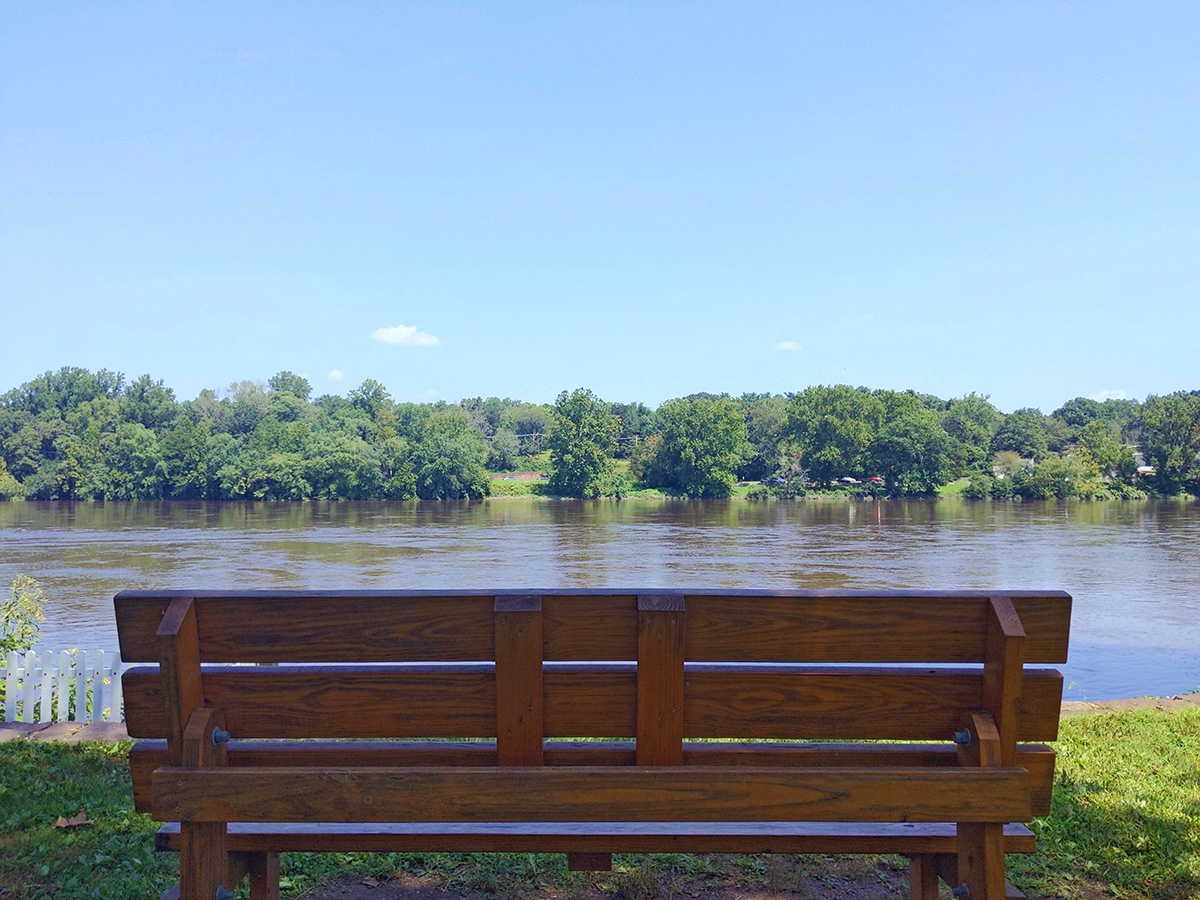
About 140 years passed between the crossing on December 25, 1776 and when the Commonwealth of Pennsylvania passed legislation in 1917 that established Washington Crossing Historic Park.
But the crossing, and its impact on the Revolutionary War, never faded from the collective consciousness in that time, says Kimberly McCarty, the park’s curator. “In fact, it became mythologized not long after it happened,” she says.
Depicting the Crossing
In 1819, Thomas Sully, a leading portrait painter in Philadelphia at the time, painted the now-famous “The Passage of the Delaware.” The scene features a majestic-looking George Washington presiding over the first brigade to cross the river. Emanuel Leutze followed in 1851 with his own version. That painting, titled “Washington Crossing the Delaware,” has become synonymous with the crossing.
The Creation of Taylorsville
While the lore grew, life around the site of the crossing followed a humbler evolution. Only a couple of months after the crossing, Benjamin Taylor, who may have participated in the crossing, bought the ferry and the property around it.
The ferry ran steadily until 1835, when a bridge was built. Twice, it was briefly resuscitated after flooding destroyed the bridge and a new one was built.
In time, Taylor’s sons grew the family’s holdings. Mahlon K. Taylor was the most astute businessman among them, according to McCarty. His brothers owned larger properties for various reasons, but Mahlon Taylor acquired the ferry and the coveted area around it. He built a number of homes locally, including a large one for his family. It’s the bright yellow home that sits next to the bridge to this day.
Through the first half of the 19th century, Taylorsville gradually came into being. Although it was never formally recognized as a town, it did have its own post office.
“It prospered for a couple of decades, but its heyday was relatively short-lived,” McCarty says. “The construction of the canal was probably a contributing factor, but I think it’s overstated to say it was the only factor.”
The Park Begins to Take Shape
Around the beginning of the 20th century, the idea of forming a park at the site of the crossing gained some momentum. A Philadelphia-based doctor named Isidor Strittmatter took significant steps to help facilitate the idea, purchasing lots and homes in Taylorsville, including the Mahlon K. Taylor House. When the park was established, he sold all of it to the Commonwealth.
“It was purely about the cause. He had no interest in turning it into an investment opportunity,” McCarty says.
At that point, the Commonwealth moved quickly to acquire other homes in Taylorsville. Some were moved nearby. Others were razed.
The oldest structures, including McConkey’s Ferry Inn, were kept in place. The inn as we know it today bears little resemblance to the building that stood at the time of the crossing, McCarty says. An architect hired by the Commonwealth in the 1950s-60s determined that parts of the building foundation may be original (though some historians disagree). The rest of the building, however, was remodeled after the crossing.

